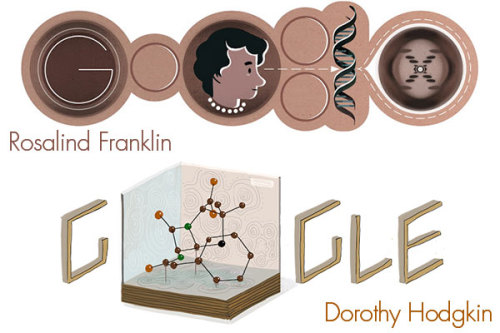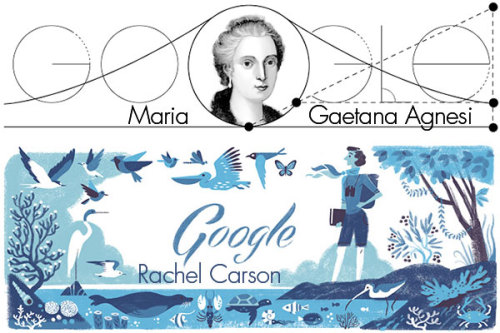jtotheizzoe:Doodling the Right Thing With a few humble doodles, I think Google may have created th
jtotheizzoe: Doodling the Right Thing With a few humble doodles, I think Google may have created the most widely-seen, and perhaps the most influential, science communication effort on Earth. Their series of Google search page tributes to female scientists (a few of which I’ve shared above) is a huge win for showcasing the efforts of women in science, which, unless you’ve been living under a very patriarchal rock for the past forever, you know is something the world needs very badly. It might seem silly to be talking about a picture like this, but we’re dealing with the Times Square billboard of internet graphics here. Every day, 730 million people visit Google.com a total of 17 billion times. Billion. Granted, not all of them see the same Google doodle, as only a small set of them are “global” doodles, but even if just 10% of daily unique visitors see a particular doodle, and just 10% of those people take the time to figure out who/what they’re looking at, that means 7+ million people a day (and that doesn’t even take into account repeated visits). I suspect that’s a low estimate, too, although I base that on nothing except my own optimism. For comparison, Cosmos: A Spacetime Odyssey drew just over 3 million U.S. viewers for its final episode. I’ll concede that’s not really a fair comparison, since Cosmos is a highly-produced, hour-long scripted TV series with very broad and lofty goals and a Google doodle is, well, a picture on the internet. The point I’m trying to make is not that Cosmos is less influential than a cartoon, because that’s ridiculous (although I must admit the more I think about it, I really don’t know how ridiculous it is). My point is that a Google doodle about science reaches a metric f**kton of people. I am having a hard time thinking of another single Internet Thing that has the potential to reach so many people in a single day. No meme-filled Facebook page or educational YouTube channel comes close, and I don’t suspect any traditional science news/media sites are even in the ballpark. Google still has a long way to go to bring their doodle gender representation anywhere close to level. According to SPARK, only 17% of doodles between 2001-2013 were women (and 74% of them were white people). In addition to monitoring women featured in doodles, the blog Speaking Up For Us keeps a running list of doodle-worthy women.Despite that remaining imbalance, I think this is an incredible effort on the part of Google, and we should demand even more doodles of underrepresented groups (both in science and beyond). Can something so passive make any difference? To be honest, I don’t know, but I suspect that it does. When people only see one type of person recognized for accomplishing the Great Scientific Things of history, they consciously and subconsciously assume that only that type of person actually accomplishes Great Scientific Things. That is how underrepresented people stay underrepresented, which is the opposite thing we want to happen. Google doodles aren’t going to cure cancer or send a man to Mars, but they just might help inspire the person who does. Not bad for a drawing. -- source link



